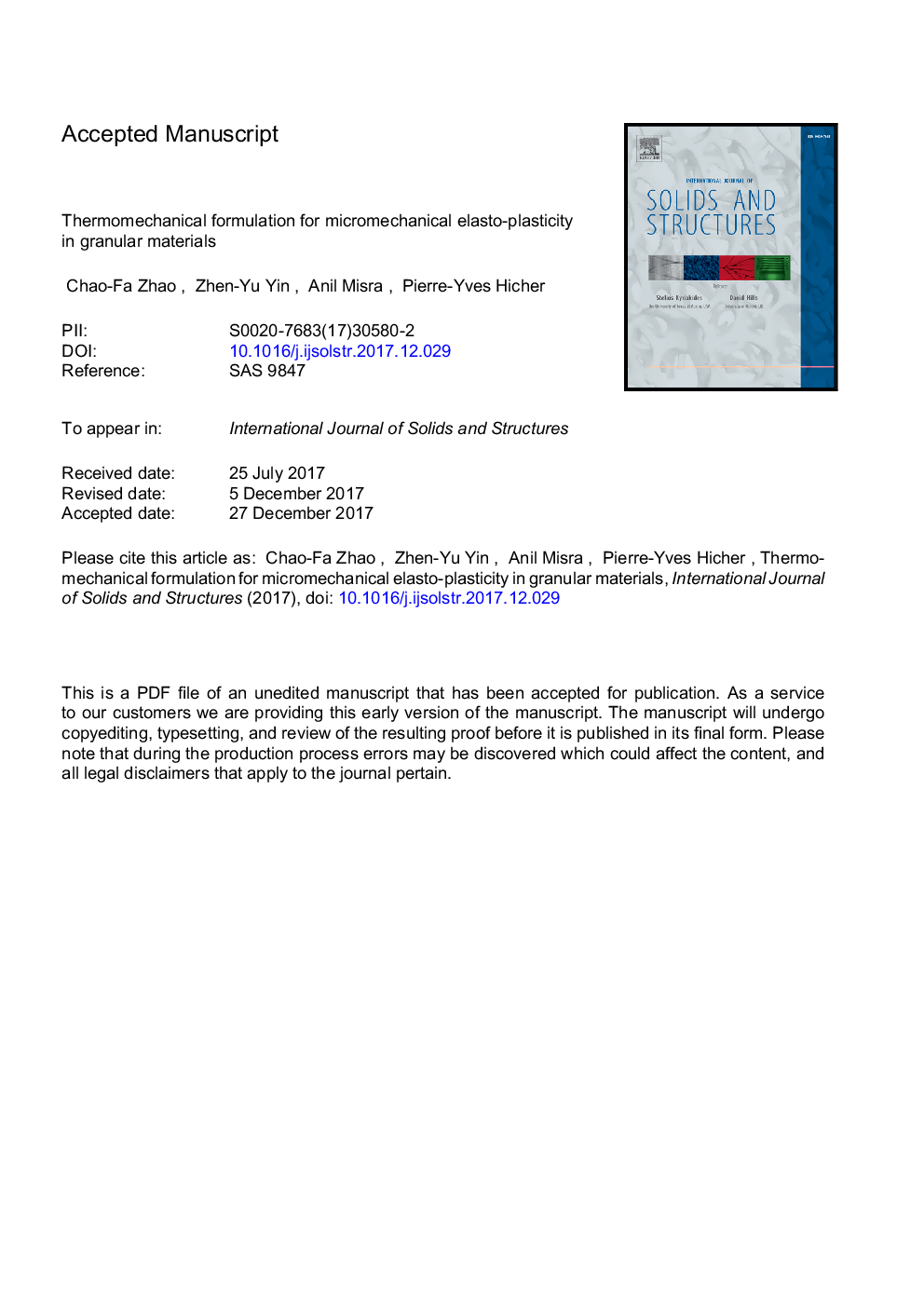| Article ID | Journal | Published Year | Pages | File Type |
|---|---|---|---|---|
| 6748360 | International Journal of Solids and Structures | 2018 | 32 Pages |
Abstract
The aim of this paper is to answer the question: how to construct a thermodynamically consistent micromechanical model and to analyze the existing micromechanical models from an energy perspective. For this purpose, we extended the framework of thermodynamics to micromechanical models by considering the energy stored and dissipated at the inter-particle contacts. In the suggested framework, the Helmholtz free energy and the dissipation energy at the macro scale are equaled to the volumetric average of the Helmholtz free energy and the dissipation energy at the micro scale. Consequently, the elasto-plastic formulation at inter-particle contacts can be obtained from the expressions of the micro free energy and the micro dissipation potentials. A thermodynamically consistent micromechanical model has been constructed on the basis of the static hypothesis. An isotropic compression and several triaxial tests were simulated with the model to analyze the energy conservation and dissipation under loading. Free energy and dissipation energy were computed at both micro and macro scales, and the orientation of the failure plane was explained by the evolution of the local dissipation energy. The maximum micro dissipation energy agreed with the static hypothesis for which, when one direction reaches the limit state, the rupture at the macro scale is obtained. The model has been implemented into a finite element code, and with this code a biaxial compression test was performed. Strain localization appeared, and the orientations of the shear band displayed by either the accumulated deviatoric plastic shear strain or the dissipative energy were consistent.
Keywords
Related Topics
Physical Sciences and Engineering
Engineering
Civil and Structural Engineering
Authors
Chao-Fa Zhao, Zhen-Yu Yin, Anil Misra, Pierre-Yves Hicher,
